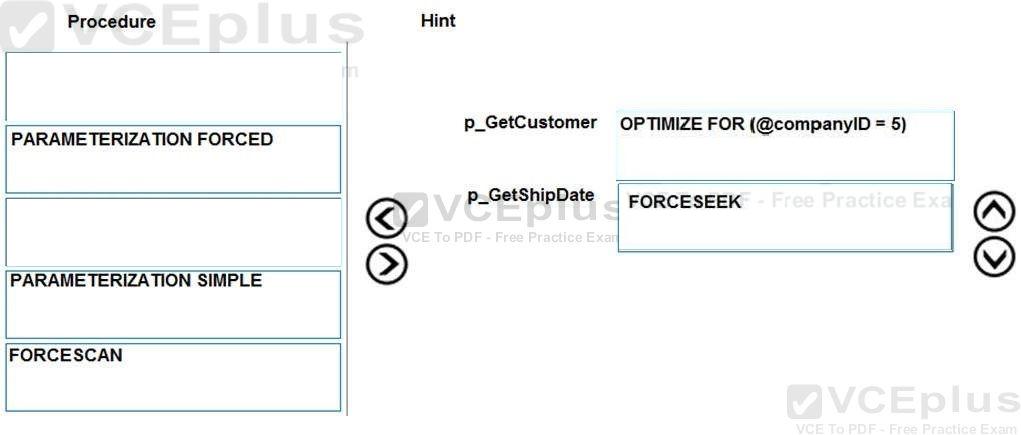DRAG DROP
You are the administrator for a heavily-used OLTP Microsoft SQL Server database.
You are troubleshooting performance issues seen when using stored procedures in the database. The database stores millions of orders across thousands of customers. Some of the customers have large numbers of orders, while others have only one order. You update the statistics and perform defragmentation of all tables and indexes, but two stored procedures still have issues when accessing data.
p_GetCustomer accepts @companyID as a parameter. From the results of profiling, you know that 90 percent of the calls use the @companyid value of 5, while the other 10 percent of calls are evenly distributed across another 10000 values. While viewing the execution plan, you discover that a non-clustered index seek is used. p_GetShipDate accepts @orderID as a parameter and returns the ship date for that order. You discover that the execution plan is performing a scan on a non-clustered index that has orderID as the index key.
You need to add appropriate query hints to each stored procedure to improve the performance.
What should you do? To answer, drag the appropriate procedures to the correct hints. Each procedure may be used once, more than once, or not at all. You may need to drag the split bar between panes or scroll to view content.
Select and Place:



